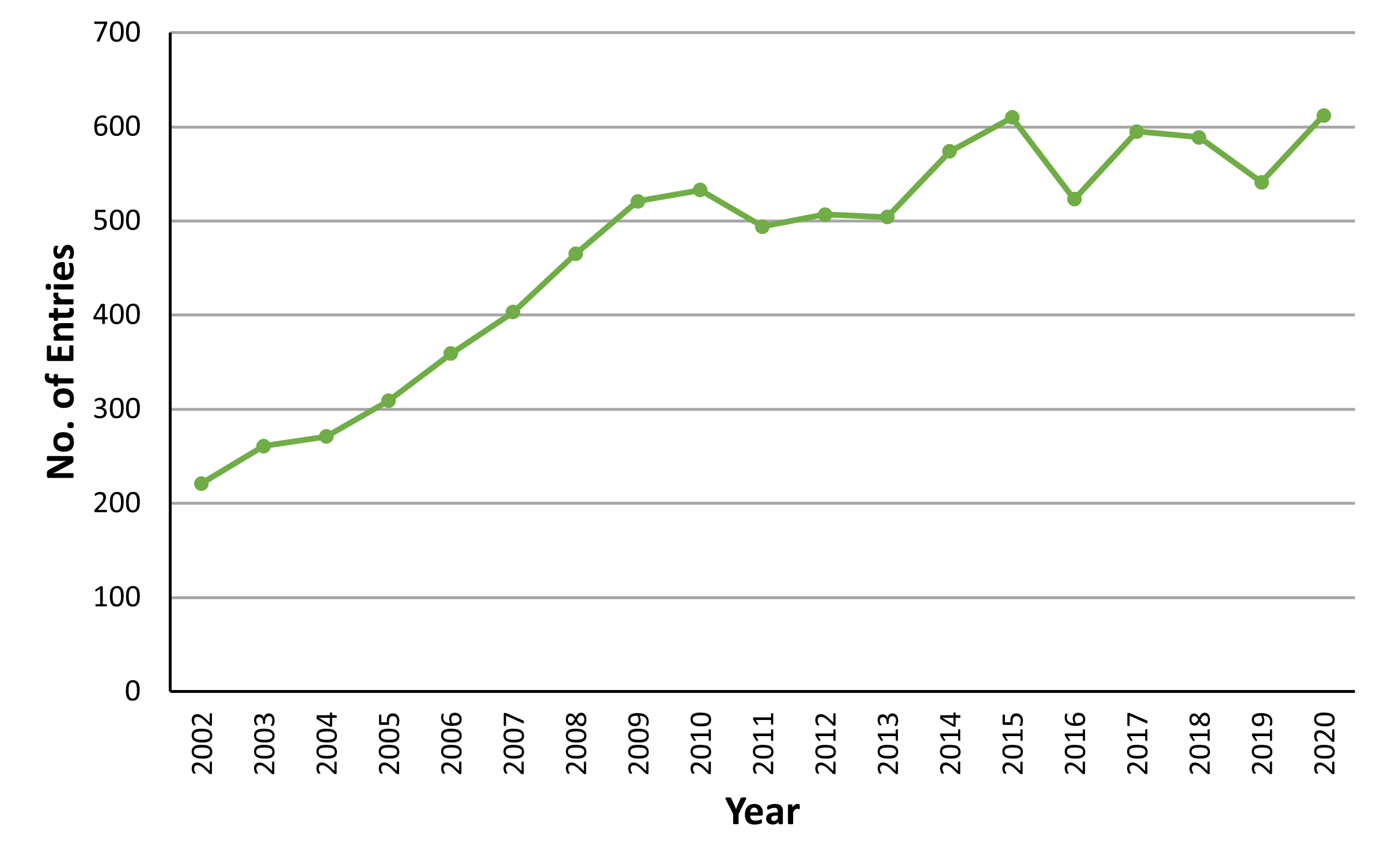| Current status | 2022 |  |
| Short term status | 2018 - 2022 |  |
| Long term status | 2011 - 2022 |  |
Click on the charts below in order to see the full resolution versions.
In 1963 two UCD physics researchers, Rev. Dr. Tom Burke and Dr. Tony Scott, came across the concept of 'Science Fairs'’ while conducting research in New Mexico, America. These local school science exhibitions culminated in State Fairs and ultimately a national competition. The pair decided that this type of hands-on science was something that Irish secondary-level students could benefit from, by taking science outside the four walls of the classroom and showing that it is all around.
And so the BT Young Scientist & Technology Exhibition was born. The first competition was held in 1965 in the Round Room of the Mansion House in Dublin and attracted 230 entries. In recent years the number of entries has increased dramatically, reaching an all-time high in 2015 when 2077 projects were submitted.
All entries are screened to select just over 550 projects that go through to compete in the RDS. Therefore, this metric is based on the number of applications, rather than on those successfully qualifying within the Biological and Ecological Sciences category, as it better reflects the level of interest and engagement in the functioning of the natural world.
It is important to note the COVID19 pandemic resulted in a virtual exhibition in 2021 and this greatly impacted the number of entries. The category has seen lower entries since then however the organisers are hopeful it will increase again.
More information on the BT Young Scientist & Technology Exhibition can be found here:

